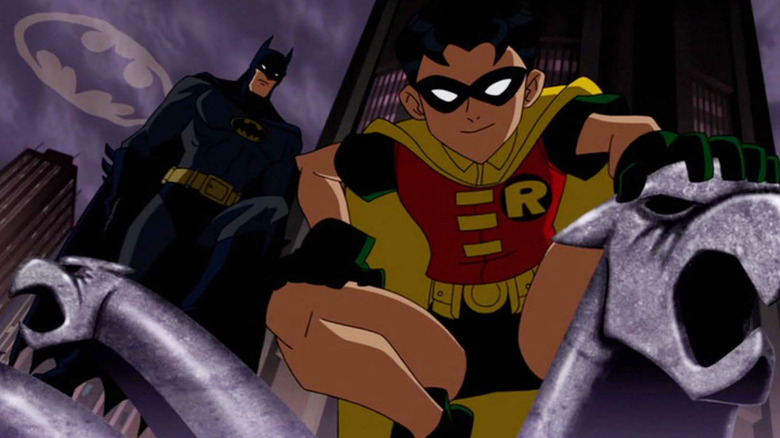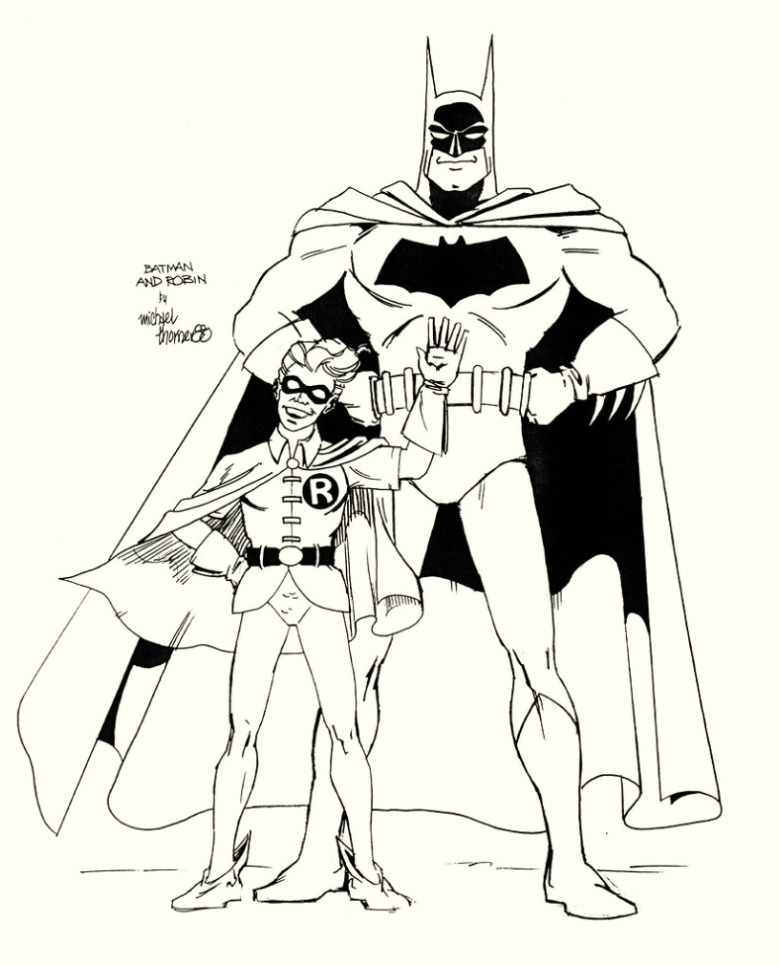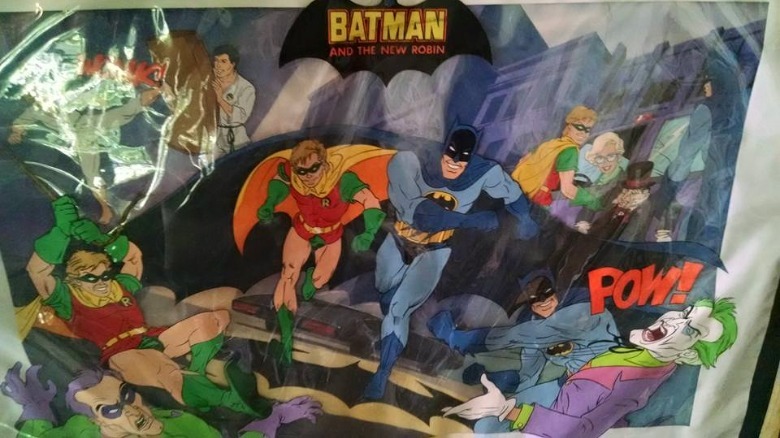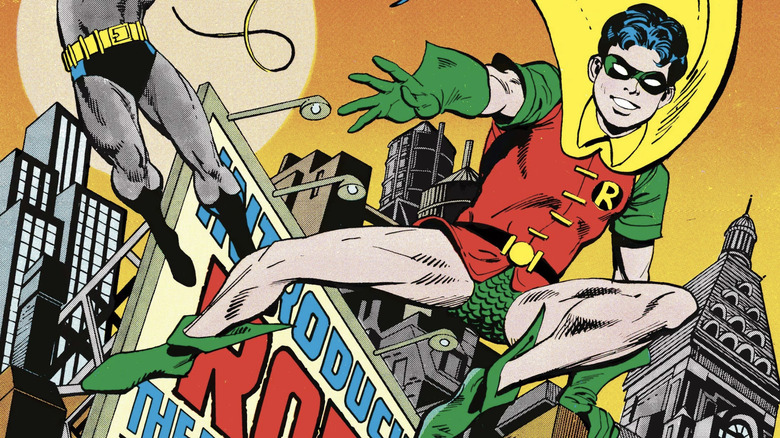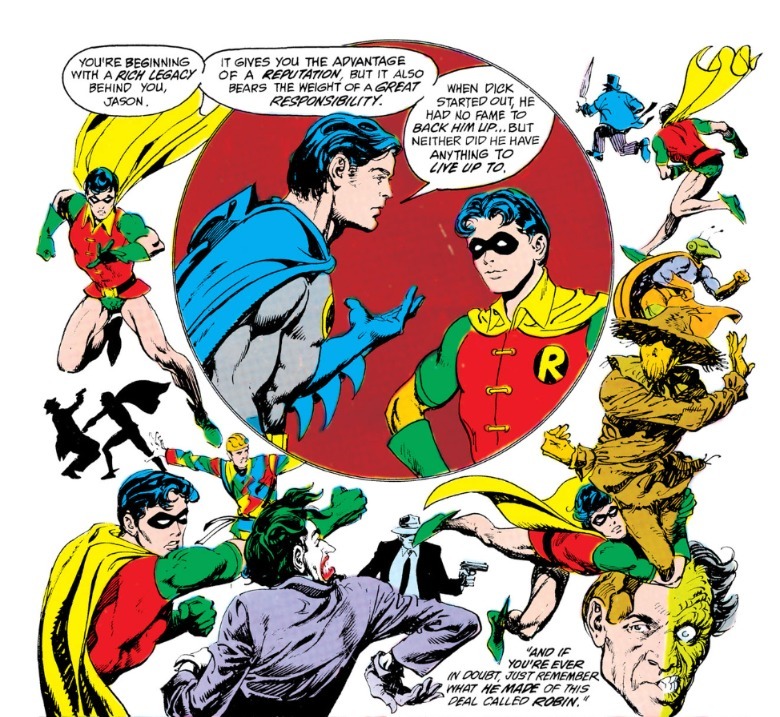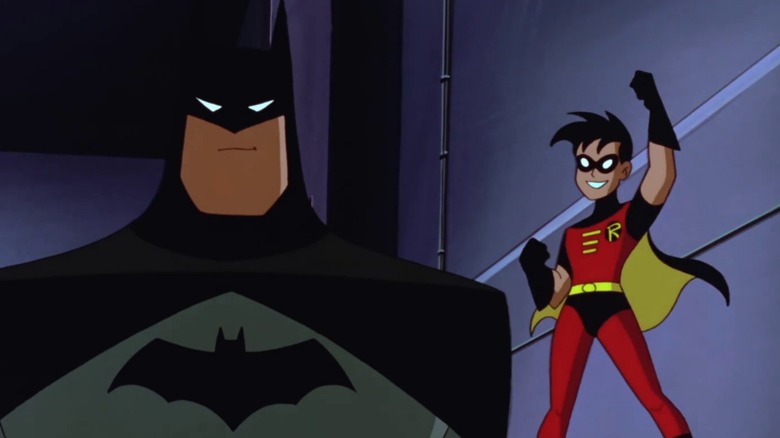A Rejected Batman Animated Series Would Have Introduced His Darkest Sidekick
We may receive a commission on purchases made from links.
When "Batman: The Animated Series" debuted in 1992, Batman's last leading role in animation had been on the final "Super Friends" season: 1985's "The Super Powers Team: Galactic Guardians." Batman had never exactly faded away, though. There was another Batman cartoon pitch in the late 1980s (one that's totally fallen through the cracks of history since then) in the form of "Batman and the New Robin." This show would've starred Batman alongside the second (and edgiest) Robin, Jason Todd.
"Batman and the New Robin" was going to be produced by Nelvana, and the unearthed series bible was penned by J. Michael Straczynski. JMS, as he's often called, would go on to create the space opera series "Babylon 5," and he's also a prolific comic book writer. In the '80s, though, he was working in children's animation; he'd co-created "She-Ra: Princess of Power" with "He-Man" writer Larry DiTillio.
Concept artist Michael Turner shared some work he did for "Batman and the New Robin" while revealing a reason it fell through: Nelvana lost the Batman rights and decided to produce the "Beetlejuice" cartoon instead.
In 2015, Dan DiDio, then a co-publisher at DC Comics and also a former employee at ABC's children programming, shared on Facebook a pitch cell from the unmade show he'd hung onto. The style looks a fair bit different from Turner's art, but both give a rough idea of what the cartoon might've looked like.
"Batman: The Animated Series" remains the definitive take on Batman for many, many Bat-fans out there. Adventurous and gothic, it's quintessential in a way no Batman cartoon before or since has become. I wouldn't trade it for the world — or the "Batman and the New Robin" pitch being made. Still, reading JMS' series bible piques my Batman-obsessed brain.
If you read the pitch, you can tell Straczynski knows his Batman. The pitched show doesn't sound quite as dark or mature as "Batman: The Animated Series," but it seems like it would've taken the Caped Crusader and his world seriously.
Throughout the show, Straczynski writes, Jason would still be learning his crime-fighting skills. It's easy to imagine the series using him as a stand-in for kids to learn about Batman's world. To that end, Jason would also attend a public school. "There's a bit of Clark Kent to Jason Todd," Straczynski notes (i.e. he'd work hard to conceal his secret identity by not hurting bullies even though he could). The Jason Todd of the comics, though? Not exactly a mousey Clark Kent.
Jason Todd was Batman's second Robin
Batman's partnership with the original Robin, Dick Grayson, had become a lot more on-and-off since the 1970s. Dick had aged up from a young boy into a college student, so he was only a part-time crimefighter. The absence of Robin is what slowly made Batman, both the comic book and character, broodier.
By 1984, Dick Grayson had become a full-time Teen Titan. During Marv Wolfman and George Perez's famous "Judas Contract" storyline, he dropped Robin for a new identity: Nightwing. But in the meantime, Batman had taken in another young orphan boy in the form of Jason Todd. Created by Gerry Conway and Don Newton, Jason became Robin in 1984's "Batman" #368 (with Dick's blessing).
These days, Jason Todd is most famous for being the Robin who died in the 1988 storyline "Batman: A Death in the Family" (by Jims Starlin and Aparo, covers by Mike Mignola). Jason's murder was both shock value and a concession to unhappy fans.
Frank Miller's acclaimed 1986 comic "The Dark Knight Returns" featured an older Bruce Wayne who retired from being Batman after Jason fell in the line of duty. "The Dark Knight Returns" was the first comic to suggest Robin died, but Miller had no clue DC would run with the idea.
In 1987, DC rebooted its comics continuity, so "Batman" writer Max Allan Collins took the chance to revise Jason. The Pre-Crisis Jason Todd, created by Conway and Newton, was more of a typical plucky kid sidekick. He even had the exact same origin as Dick Grayson, being the son of murdered circus acrobats.
Collins rebuilt Jason from the ground-up; the new young Mr. Todd was a street punk and the son of a small-time crook father (killed by Two-Face). He meets Batman while boosting the Batmobile's tires, and Batman can only laugh at the audacity. Jason carried his harder edge over as Robin. On one of his first missions, he tries to avenge his father against Two-Face. In "Batman" #424, Jason lets a rapist fall to his doom and tells Batman the criminal had only slipped. Readers did not respond positively to this dark Robin, so DC held a phone poll for Robin's death; a slim majority voted for Jason's demise.
Straczynski's series bible for "Batman and the New Robin" was based on the contemporary status quo in the comics. Based on the draft's dating, it was first written in December 1987 and last revised in March 1988. "A Death in the Family" ran through August and November that year in "Batman" #426-429. It's not clear if Jason being killed in the comics outright sank the pitch, but it surely was bad timing for the Nelvana team trying to make Robin II into a Saturday morning star.
How Jason Todd eventually made it to Batman animation
The Jason Todd described in Stracyznski's series bible sounds like a bridge between the Pre and Post-Crisis versions. He would not be a brutal punk Batman needed to rein in, but rather a spark of light in the Dark Knight's life:
"Don Quixote needed his Sancho Panza. Sherlock Holmes needed his Dr. Watson. And the Batman needs a Robin. In the absence of a Robin, tends toward a grim, relentless sort of attitude. Robin is needed to lighten his load, make him smile, remind him that there is light amid the darkness."
The series' pilot would tell the origin of the new Robin. This Jason meets Batman while steeling the Batmobile's tires, but his late parents were circus performers (to explain his acrobatic skills). In the cartoon, the tire-stealing would show Jason's fearlessness but not his bad side.
The regular supporting cast is there — Commissioner Jim Gordon, Alfred Pennyworth, Vicki Vale — and also original character Frederica Miles, Gordon's right-hand woman. The bible says that Nightwing might show up once or twice a season, too, and Jason would look at him like a little brother trying to live up to the older one. Not to mention Miss Chandra, a robotic nanny for Jason gifted by Superman. (This is the one part of the pitch that gives me pause.)
Suggested villains include the Joker, Penguin, Catwoman, Riddler, Clayface, Poison Ivy, Scarecrow, Cat-Man, the Ventriloquist, and Two-Face. (Here's a big difference with "Batman: The Animated Series" — that show introduced Harvey Dent first, building up to his tragic fall. JMS, though, wrote that Two-Face's origin should not be depicted in detail.)
Bruce and Jason's father-son relationship and crime-fighting partnership was meant to be the heart of "Batman and the New Robin." "Batman: The Animated Series" took after the '70s Batman comics and used Robin much more sparingly. Dick Grayson was away at college, and so only some episodes had the full Dynamic Duo. That, like those comics, allowed more storytelling flexibility. It's also another reason that "Batman: The Animated Series" felt a lot more mature than past Batman cartoons; there were no children among the main cast.
"Batman: The Animated Series" was followed by "The New Batman Adventures," which jumped ahead two years to introduce Nightwing and the second Robin. Not Jason Todd, but Tim Drake, who in the contemporary comics was the third and current Robin. In 1997, Jason was still the "dead Robin." For all the ways the "Batman" team pushed against content guidelines, even they couldn't adapt "A Death in the Family." So, they decided the show should mirror the current "Batman" comics with a Robin named Tim Drake (albeit with some of Jason's qualities, too).
But Jason did eventually return from the dead via the 2005 storyline "Batman: Under The Hood" (by Judd Winick and Doug Mahnke). That comic got adapted in 2010 as an animated film titled "Batman: Under The Red Hood," which finally brought Jason Todd into animation. After years of getting the short stick, from his murder to his cartoon never getting off the ground, Jason Todd's reputation was finally boosted by starring in one of the best animated "Batman" films.
